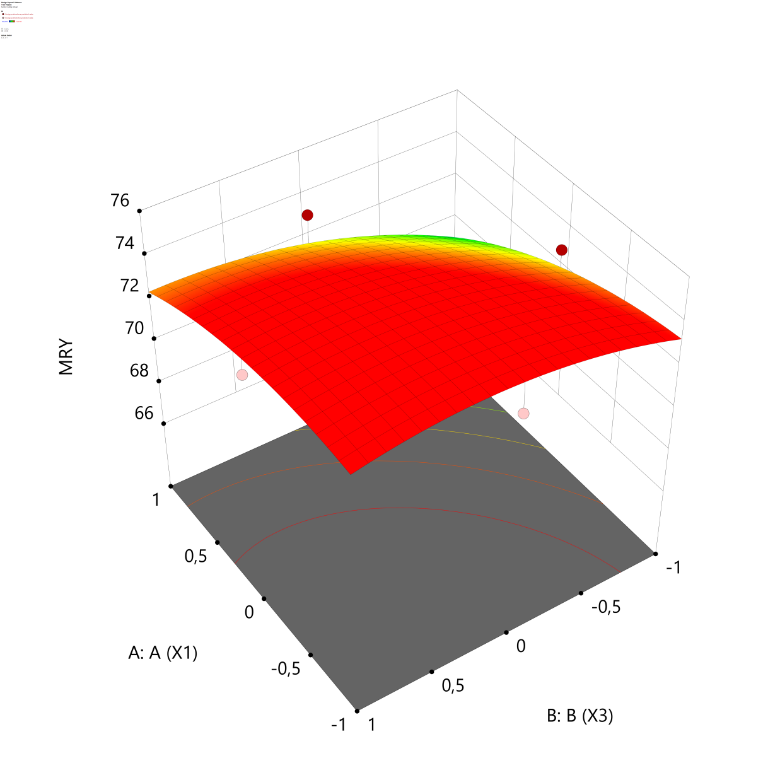Effect of drying conditions on the quality of IRGA424 rice

Journal of the Science of Food and Agriculture · Aug 15, 2018
BACKROUND: The objective of this research was to investigate the effects of drying temperature (40, 50, and 60 ∘C), tempering time (40, 80, and 120 min), and initial moisture content at onset of tempering (15, 17, and 19% dry basis) on head rice yield, milled rice yield, and total processing time of IRGA 424 rice.
RESULTS: The most significant effects were the drying temperature and its interaction with initial moisture content at onset of tempering. The optimum conditions predicted to reach the highest total yield (74.1%) included drying at 46.6 ∘C, 49 min of tempering time, and initial moisture content at onset of tempering of 19%. To achieve the maximum value of whole grain yield (52.9%), drying at 40 ∘C, 40 min of tempering, and an initial moisture content of 19% at the initiation of tempering were required. Under these conditions, the grain reached a moisture content of 13% in 84 min.
CONCLUSION: Whole-grain rice yields may be maximized through the optimization of the drying process. This may result in a larger fraction of the crop entering the human food chain, enhancing the value of the crop, and resulting in a smaller fraction of broken grain, which commands a lower market value.
BACKROUND: The objective of this research was to investigate the effects of drying temperature (40, 50, and 60 ∘C), tempering time (40, 80, and 120 min), and initial moisture content at onset of tempering (15, 17, and 19% dry basis) on head rice yield, milled rice yield, and total processing time of IRGA 424 rice.
RESULTS: The most significant effects were the drying temperature and its interaction with initial moisture content at onset of tempering. The optimum conditions predicted to reach the highest total yield (74.1%) included drying at 46.6 ∘C, 49 min of tempering time, and initial moisture content at onset of tempering of 19%. To achieve the maximum value of whole grain yield (52.9%), drying at 40 ∘C, 40 min of tempering, and an initial moisture content of 19% at the initiation of tempering were required. Under these conditions, the grain reached a moisture content of 13% in 84 min.
CONCLUSION: Whole-grain rice yields may be maximized through the optimization of the drying process. This may result in a larger fraction of the crop entering the human food chain, enhancing the value of the crop, and resulting in a smaller fraction of broken grain, which commands a lower market value.
M Mercedes Bertotto 1, Analía Gastón 2, Gustavo Sánchez Sarmiento 1, Benedict Gove 3
1Faculty of Engineering, University of Buenos Aires, Buenos Aires, Argentina.
2Faculty of Exact Sciences, Engineering and Land Surveying, CIC-UNR, IFIR (CONICET, UNR), Rosario, Argentina.
3SoftLab S.R.L, Buenos Aires, Argentina.
